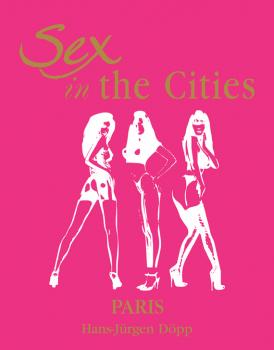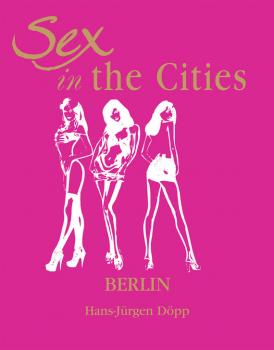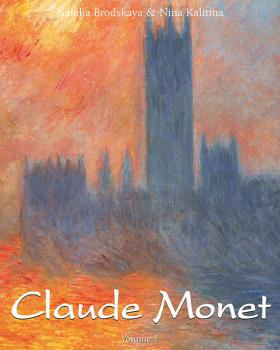Иностранные языки
Различные книги в жанре Иностранные языкиGothic Art
Gothic art finds its roots in the powerful architecture of the cathedrals of northern France. It is a medieval art movement that evolved throughout Europe over more than 200 years. Leaving curved Roman forms behind, the architects started using flying buttresses and pointed arches to open up cathedrals to daylight. A period of great economic and social change, the Gothic era also saw the development of a new iconography celebrating the Holy Mary – in drastic contrast to the fearful themes of dark Roman times. Full of rich changes in all of the various art forms (architecture, sculpture, painting, etc.), Gothic art paved the way for the Italian Renaissance and International Gothic movement.
Romanesque Art
In art history, the term ‘Romanesque art’ distinguishes the period between the beginning of the 11 th and the end of the 12 th century. This era showed a great diversity of regional schools each with their own unique style. In architecture as well as in sculpture, Romanesque art is marked by raw forms. Through its rich iconography and captivating text, this work reclaims the importance of this art which is today often overshadowed by the later Gothic style.
Factories
Born in the Industrial Revolution, the factory has long been considered like a monster of iron, subjugating the individual to the collective in an act of mass dehumanisation.Turning away from the pure functionality for which it was built, the factory is evolving into an aesthetic space, sometimes transformed into modern lofts or a museum of contemporary art. The surprising photographs featured in this work help us rediscover the volume, purity of line, beauty, and stunningly modern architecture of these steel-boned monuments.
City Lights
A symbol of massive crowds and solitary desires, the city holds promise for all those that pass through it. Its meandering streets, unexplored neighbourhoods and incessant noise create a landscape that captivates the observer. The lights of the city can conceal or reveal it, transforming its appearance hour by hour, offering countless facets to the passerby. While the light of morning pulls the city from its torpor and renews it for the dawning day, the nocturnal illumination plunges the pedestrian into the strangeness of its mysteries, creating a striking and ephemeral beauty. Between the shadow and the light, these original photographs reveal the fragile glow of the city, and help us rediscover the eternal pulse of these great capitals, simultaneously surprising and sublime.
Bridges
A bridge is a link between two worlds, a point of tension between two separate and often disparate locations. Free, belonging neither to one region or another, the bridge imposes upon the landscape and defies nature. Its existence embodies the will of mankind to construct these necessary bonds between people and places. A symbol of progress and innovation, the bridge, anonymous demonstration of the mastery and the durability of new techniques, is gradually becoming more and more light and fluid, constantly defying state-of-the-art technology. As veritable aesthetic creations, bridges appear today not only as examples of masterful engineering, but also as incredible works of art. With its magnificent photographs, this book invites the reader to rediscover these modern-day sculptures.
Sex in the Cities. Volume 3. Paris
Conveying six centuries of gallantry, serving as the world capital of fashion and love, Paris is the very symbol of eroticism and of joyful sexuality. Offenbach, in La Vie Parisienne, had already created a hymn dedicated to the pleasure of senses. The author, with complete freedom, follows André Malraux’s approach by building an imaginary museum, in a Paris where time no longer exists, space is never-ending, and desire is always present. The iconography is exceptional, coming from unpublished private collections and covering five centuries of Paris’ erotic story. It is accompanied by an academic text which allows the reader to discover this world, never vulgar and always subtle, from when the first man looked at the first woman: eroticism.
Sex in the Cities. Volume 2. Berlin
In the 1920s, Berlin, once perceived as a puritan city, became the capital of lust and the debauchery of morals. It was in this capricious town that an exceptional museum dedicated entirely to eroticism opened its doors. Abandoning all aspects of voyeurism, the Erotic Museum in Berlin is a magical place in which the imagination of man and the most refined works of art interact. This remarkable book is comprised of more than 350 rare illustrations, and accompanied by a major study written by, history professor, Hans Jürgen Döpp. It covers various aspects of erotica throughout time and continents.
Sex in the Cities. Volume 1. Amsterdam
Amsterdam is not only famous for its canals, nor for its impressive collections of paintings by Rembrandt, Vermeer, and Van Gogh, but also for its museum dedicated to Venus, which welcomes more than 500,000 visitors per year. Travelers come from the world over, rushing to enter this unusual building next to the train station, called “The Temple of Venus”. Gathered since 1985 by Monique Van Marle and her father, this collection of erotic art work is exceptional in the quality of the objects, prints, and very old photographs. Disregarding voyeurism, this museum aims to be a privileged place exhibiting eroticism’s artistic history. The author leads us on a guided tour, supported by a rich and varied iconography.
Claude Monet. Volume 2
With Impression, Sunrise, exhibited in 1874, Claude Monet (1840–1926) took part in the creation of the Impressionist movement that introduced the 19 th century to modern art. All his life, he captured natural movements around him and translated them into visual sensations. A complex man and an exceptional artist, Monet is internationally famous for his poetic paintings of waterlilies and beautiful landscapes. He leaves behind the most well-known masterpieces that still fascinate art lovers all over the world. In this two-volume illustrated work, Natalia Brodskaya and Nina Kalitina invite us on a journey across time to discover the history of Impressionism and Monet; a movement and an artist forever bound together. Specialists of 19 th and 20 th century art, the authors shed light on the birth of modernity in art, a true revolution responsible for the thriving art scene of the 20 th century.
Claude Monet. Volume 1
With Impression, Sunrise, exhibited in 1874, Claude Monet (1840–1926) took part in the creation of the Impressionist movement that introduced the 19 th century to modern art. All his life, he captured natural movements around him and translated them into visual sensations. A complex man and an exceptional artist, Monet is internationally famous for his poetic paintings of waterlilies and beautiful landscapes. He leaves behind the most well-known masterpieces that still fascinate art lovers all over the world. In this two-volume illustrated work, Natalia Brodskaya and Nina Kalitina invite us on a journey across time to discover the history of Impressionism and Monet; a movement and an artist forever bound together. Specialists of 19 th and 20 th century art, the authors shed light on the birth of modernity in art, a true revolution responsible for the thriving art scene of the 20 th century.









